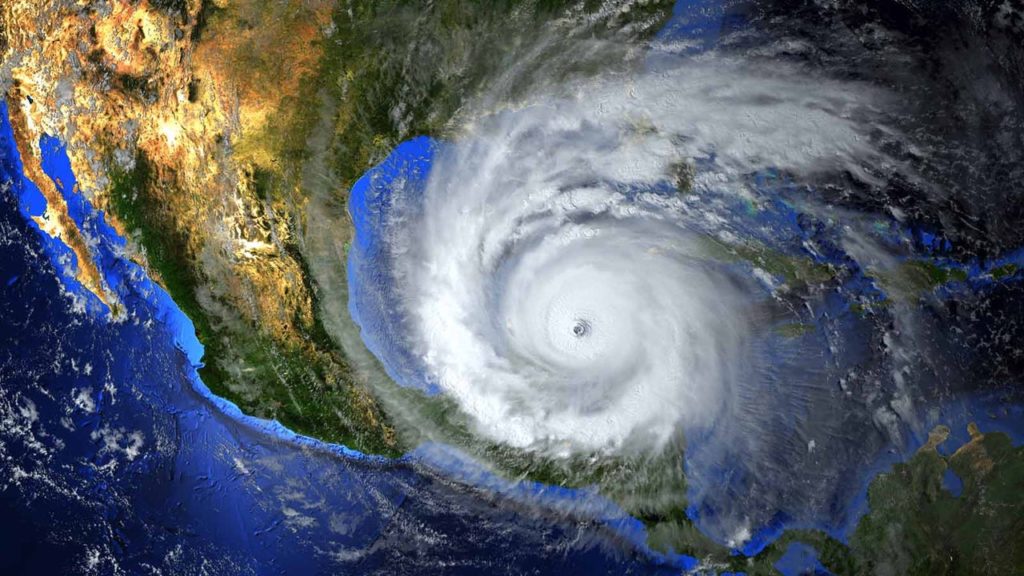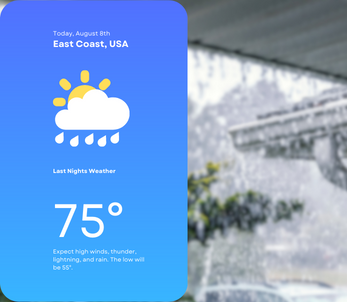Hurricane Season: What to Know and how to Prepare Yourself
The official Atlantic hurricane season runs from June 1 to November 30 every year since 1965. This six-month period was chosen by the National Hurricane Center because it accounts for 97% of all Atlantic tropical storms and hurricanes, according to National Oceanic and Atmospheric Administration’s (NOAA) Hurricane Research Division. Atlantic Hurricane season impacts all of the Atlantic basin which includes the Atlantic Ocean, Caribbean Sea, and the Gulf of Mexico. Based on a 30-year climate period from 1991 to 2020, the average Atlantic hurricane season has 14 named storms, 7 hurricanes, and 3 major hurricanes (not all of these will make landfall). While the first-named storm typically forms in mid to late June, the first hurricane normally tends to form in early to mid-August.
The peak of hurricane season occurs between mid-August and late October when the waters in the equatorial Atlantic and Gulf of Mexico have warmed enough to help support the development of tropical waves.
This year, forecasters at NOAA’s Climate Prediction Center, a division of the National Weather Service, are predicting above-average hurricane activity this year — which would make it the seventh consecutive above-average hurricane season. NOAA’s outlook for the 2022 Atlantic hurricane season, which extends from June 1 to November 30, predicts a 65% chance of an above-normal season, a 25% chance of a near-normal season and a 10% chance of a below-normal season.
You may be wondering why is there such a steep increase in Hurricane activity? NOAA says that the reason is attributed to several climate factors – most importantly being the ongoing La Niña that is likely to persist throughout the hurricane season. This causes warmer-than-average sea surface temperatures in the Atlantic Ocean and the Caribbean Sea, weaker tropical Atlantic trade winds, and an enhanced west African monsoon. An enhanced west African monsoon supports stronger African Easterly Waves, which seed many of the strongest and longest-lived hurricanes during most seasons.
What is a “Hurricane”?
A Hurricane is a large, swirling storm that forms over warm ocean waters. While not all the time, hurricanes can make landfall. When a hurricane reaches land, it pushes a wall of ocean water ashore. This wall of water is called a storm surge. Heavy rain and storm surges from a hurricane can cause flooding.
Hurricanes also produce winds that range from 119 kilometers per hour (74 mph) upwards to 252 kilometers per hour (157 mph). Winds from a hurricane can damage buildings and trees.
There are five types, or categories, of hurricanes. The scale of categories is called the Saffir-Simpson Hurricane Scale. The categories are based on wind speed.
- Category 1: Winds 119-153 km/hr (74-95 mph) - faster than a cheetah
- Category 2: Winds 154-177 km/hr (96-110 mph) - as fast or faster than a baseball pitcher's fastball
- Category 3: Winds 178-208 km/hr (111-129 mph) - similar, or close, to the serving speed of many professional tennis players
- Category 4: Winds 209-251 km/hr (130-156 mph) - faster than the world's fastest rollercoaster
- Category 5: Winds more than 252 km/hr (157 mph) - similar, or close, to the speed of some high-speed trains
What Are the Parts of a Hurricane?
Eye: The eye is the "hole" at the center of the storm. This is typically a period of calmness in the middle of the storm - winds are light in this area and skies are partly cloudy, and sometimes even clear.
Eye wall: The eye wall is the swirl of thunderstorms around the eye. The wall is where winds are strongest and rain is heaviest.
Rain bands: Bands of clouds and rain go far out from a hurricane's eye wall. These bands stretch for hundreds of miles. They contain thunderstorms and sometimes tornadoes.

Ways to Prepare:
1. Understand Your Risk.
Find out today what types of weather hazards could affect your home and then start preparing and learning how to handle them. Contrary to popular belief, hurricanes are not just a coastal problem. Wind and water can be felt hundreds of miles inland.
2. Develop an Evacuation Plan.
Once you find out if you home is either in a hurricane evacuation zone or could feel the effects of a hurricane, you also need to create an evacuation plan.
It is important to understand how a storm affects your area so you can create multiple evacuation plans. Create a plan with your family so you are prepared when the storm hits. Be sure to listen to your local officials in case you need to adjust your plan.
3. Assemble Disaster Supplies.
Whether you’re evacuating or sheltering in place, it is important to have supplies not just to get through the storm but for the potentially lengthy aftermath. Some key items to keep on hand are:
- Non-perishable food (canned fruits, vegetables, beans, fish, and meat), nut butter, nuts and seeds, jerky, granola and protein bars, non-dairy milk, etc)
- Water and medicine to last each person in your family a minimum of 3 days (store a longer than a 3-day supply of water, if possible)
- Extra cash
- Battery-powered radio and flashlights
- Portable crank or solar-powered USB charger for your cell phones
- If a storm is coming, fill up your car gas tank
4. Get an Insurance Checkup
Now that it is the start of hurricane season, call your agent and ask for an insurance check-up. Make sure you have enough insurance to repair or even replace your home and/or belongings. Remember, home and renters insurance doesn’t cover flooding, so you’ll need a separate policy for it.
Flood insurance is available through your agent, or the National Flood Insurance Program at floodsmart.gov. Act now, as flood insurance requires a 30-day waiting period.
5. Strengthen Your Home.
Cover windows. Trim trees. Secure loose outdoor items. Secure all doors. Move vehicle to a safe location.
Have the proper plywood, steel or aluminum panels to board up the windows and doors. Remember, the garage door is the most vulnerable part of the home, so it must be able to withstand the winds.
If you’re a renter, work with your landlord now to prepare your home for a storm.
6. Complete a Written Plan
Have a contact list. Keep critical documents together for quick access. Have at least one contact outside of the impact area. Share your plan.
Take the time now to write down your hurricane plan. Know who and where to look for evacuation orders for your area, decided on locations where you can safely ride out the storm, and build your closet of emergency supplies. Being prepared before a hurricane makes landfall can mean the difference between being a hurricane victim or a hurricane survivor.






